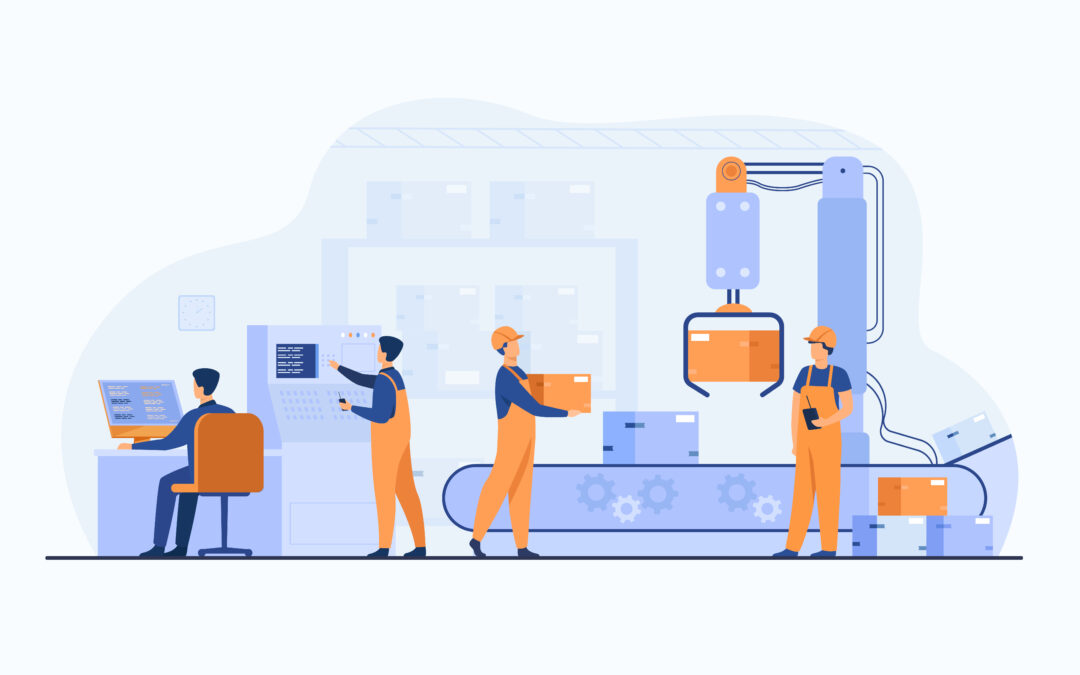What can we expect from the IoT world in 2022? The past two years have been full of surprises, and it taught us that we cannot prepare for everything. It is difficult to predict the future, but we can look at past trends and technologies to help guide us. The manufacturing and industrial sectors faced numerous problems in the unprecedented year 2020. Routine manufacturing, teamwork, and collaboration were all put on hold as a result of the pandemic. Due to lockdowns, social distancing, and health concerns, firms and enterprises adapted their strategies to include digital transformation. Interestingly, Between 2017 and 2023, the global industrial IoT market is estimated to reach USD 751.3 billion, rising at a CAGR of 23.88 percent.
The massive potential of Industrial IoT
The potential for the IIoT is enormous. McKinsey estimates that the economic impact of the IIoT could be as high as $11.1 trillion per year by 2025. That’s more than the current GDP of China! It has the potential to bring about massive improvements in the efficiency and safety of industrial processes. The potential benefits of IIoT include:
- Reduced waste and improved efficiency through real-time data analysis
- Reduced downtime and improved safety through predictive maintenance
- Increased production through more accurate process control
- Improved customer service through enhanced product tracking
- Securing Operational Technology (OT)
- Remote Operations with Increased Automation
How will Industrial IoT change in 2022 and beyond?
The industrial internet of things (IIoT) is a hot topic in the business world right now. But what will it look like in 2022 and beyond?
Well, IIoT is still in its early stages, and there are a lot of changes that could happen in the next few years. Some experts believe that the IIoT will become even more widespread, while others think that it will become more specialized. Still it is transforming the way businesses operate and is predicted to have an economic impact of $11 trillion by 2025. In 2022 and over the next few years, we can expect the following changes in the industrial IoT:
- Increased use of artificial intelligence and machine learning for data analysis
- More widespread deployment of 5G networks
- Greater integration of blockchain into industrial processes
- Proliferation of autonomous vehicles and robotics in factories
- Cybersecurity will become even more important
- Proliferation of edge devices and gateways
With increased connectivity, faster 5G and Wi-Fi, and improvement in AI and machine learning, industrial IoT solutions are all set to deepen its roots.
What challenges will businesses face with Industrial IoT?
The IIoT offers tremendous potential for businesses, as it can improve efficiency, safety, and profitability. However, there are a number of challenges that businesses will face when implementing the IIoT.
One of the biggest challenges is security. Industrial IoT devices are often connected to sensitive and confidential data, and they can be vulnerable to cyberattacks. Another challenge is integrating the IIoT with existing systems. Many businesses have complex IT systems that need to be integrated. Another challenge is that businesses will need to invest in new technologies and train their employees to use them. Industrial IoT can be difficult to implement and manage, so businesses will need to make sure they have the resources to do so.
For many years, OT (Operational Technology) and IT (Information Technology) have been separate entities, with each managing their own area of responsibility. However, with the rise of the Internet of Things, It requires them to work together. This has led to a number of challenges for businesses, as they struggle to find the right way to integrate the two systems in order to get the most out of them.
How can your business prepare for the future of Industrial IoT?
The potential for the IIoT is huge, and businesses that prepare for it now will be in a strong position to take advantage of it in the future. There are a few things businesses can do to get ready for the IIoT.
- First, they should start collecting data about their operations. This data can be used to create a detailed picture of how the business works and where are the opportunities for improvement.
- Secondly, establish a clear business case for IIoT.
- Also, businesses should make sure that they have a strong network infrastructure in place. The more connected devices there are, the more strain there will be on the network.
- Get on board with cloud computing. The cloud is essential for handling the massive influx of data that industrial IoT will produce.
- Lastly, businesses should invest in data analytics capabilities including sensors, data management, and analytics tools. With so much data being collected, it’s becoming challenging to handle it.
If your business is not yet prepared for industrial IoT, now is the time to start preparing.
This article looked at the future of industrial IoT and what changes businesses can expect over the next few years. By 2022, industrial IoT will become more mainstream, and businesses will be using it to drive efficiencies and improve their bottom line. To learn more about industrial IoT and how it can benefit your business, visit our website www.palmchip.com

